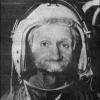
Sign in to follow this
Followers
0

A Bit of Confusion on the FMC and VNAV/LNAV
By
gpbarth, in PMDG 737NGX | 737NGXu


By
gpbarth, in PMDG 737NGX | 737NGXu